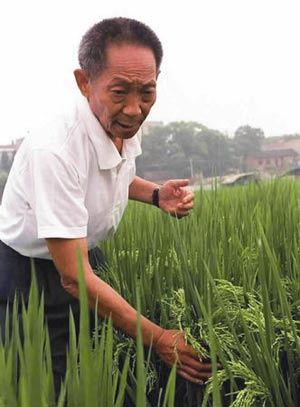Why and How the CPC Works in China
 0 Comment(s)
0 Comment(s) Print
Print E-mail
China.org.cn, June 30, 2011
E-mail
China.org.cn, June 30, 2011
Chapter 5: Why Could the CPC Solve the Problem of Feeding 1.3 Billion People
In his article under the controversial title "Who Will Feed China? Wake-Up Call for a Small Planet" published in 1994, Lester R. Brown, founder of the Worldwatch Institute, pointed out that food security is the most severe challenge confronted by mankind. According to Brown, by 2030 the Chinese population will have reached 1.6 billion, which will lead to a sharp increase in the demand for food.
In the process of industrialization China will see a constant decline in its total grain output as a result of the decrease in the cultivated land area, shortage of water resources and damage to the ecological environment, so it will be impossible for China to be self-sufficient in food. As the gap between food supply and demand will exceed the total world trade volume in grain, the grain from all the grain-exporting countries will be insufficient to feed China. He then comes to the sensational conclusion that this will cause a food crisis worldwide.
However, more than a decade has passed, and Brown's predictions have proved inaccurate; instead, China's self-sufficiency rate in grain is over 95 percent, and the issue of food supply has been basically addressed. Compared with many countries where people are still under the threat of hunger, China is in an obviously much better situation. Then how could the CPC so smoothly tackle the food supply for 1.3 billion people?





Go to Forum >>0 Comment(s)